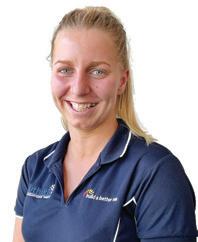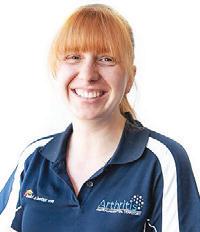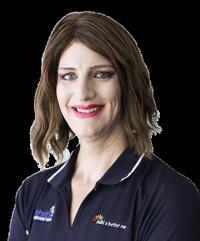








































CHAOS, in the form of traffic and parking issues, has set the Deakin Residents’ Association against a proposal to build an early learning centre for 120 children.

President of five years, John Bell, 81, explains the association is concerned the centre will bring traffic and park ing chaos.

“The proponent – St Luke’s An glican Church – is not providing the minimum parking on-site, relying instead on street parking,” he said.
“We have these little, tiny, narrow streets; you cannot possibly park on both sides.
“Now, this new early learning centre block is on an island between Macartney Crescent and Newdegate Street. The answer they have come up with is they will just ban parking outside the residences, all the way around.”


Bell said this was taking away the right for people in that area to have visitors or contractors parking their vehicles outside their home.
“To make it more interesting, the garbage collectors won’t be able to get through with their trucks if people are
lectors that are impacted, it will be the fire brigade and emergency services, too. The Woolworths delivery truck wouldn’t even be able to get through.”
The association’s involvement began by commenting on the 6000-squaremetre development application in December 2021.
“It’s a big site at the old St Luke’s Anglican Church, in the middle of a residential area between Newdegate Street and Macartney Crescent,” he said.
“The church hasn’t been used for seven years, and they also have on this site two residences, which are appar-
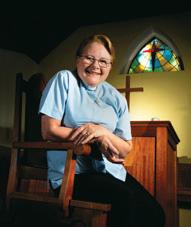
tember 12, 2022.
“There had been revisions to the proposal during the assessment period which we were not informed of.
“We appealed the decision to ACT Civil and Administrative Tribunal in October, 2022.”
Bell said the people who want to do this think they’re going to make money, but it’s no secret that the Deakin Residents’ Association was challenging this development.
“They’ve hired expensive lawyers, and we’re just a bunch of residents,”
Since 1993: Volume 29, Number: 6
Managing director: Kate Meikle, kate@citynews.com.au
Sales director: Tracey Avery, 0477 939999
Senior advertising account executive: David Cusack, 0435 380656

Advertising account executives: Damien Klemke, 0439 139001 Tim Spare, 0423 381691
Editor: Ian Meikle, editor@citynews.com.au
Journalist: Lily Pass, lily@citynews.com.au
Arts editor: Helen Musa, helen@citynews.com.au
Production manager: Janet Ewen

Graphic Designer: Mona Ismail
Proof reader: Glenda Anderson
Distribution manager: penny@citynews.com.au
asked us to represent them.
“A number of them have contributed money to pay for the cost, which shows you how concerned they are.”
Bell said the ideal fix would be to stop the early learning centre from being built.
“There are other things that could be done to this site that we would be much happier with,” he said.
“I think there are a number of possibilities for what should be built on the site. The church should just hand back its concessional lease if it’s not going
to use it for church purposes.
“Then the government could subdivide the site into blocks and sell them off, but our practice is not to make alternative suggestions because there may be other things that the church would like to do.
“We don’t pick fights with everybody who wants to do development. We just don’t have the resources, but this one is a bit of a challenge. We just think it’s not appropriate for the area, it’s ridiculous.”
He said the problem was that ACT parking requirements were out of date.
“It has a formula for so many spaces for every child, so it assumes that staffing is related to number of children, which is not unreasonable. However that doesn’t reflect the reality,” Bell said.
“You have to cater for teachers, students and teachers’ aides.”
But, Bell said, there was a shortage of teachers for early learning centres and the area is already oversupplied with such facilities.
“There are about seven within a couple of kilometres and they all have vacancies,” he said.
“In order to recruit teachers you need to provide places for student teachers to come and learn. But they also need a parking space, and then you have gardeners, painters, maintenance people and you have people coming in to help with food.”

I CAN’T believe members of the ACT government are not asking themselves how much longer Labor and Greens-voting residents will tolerate the government’s response to the needs and welfare of the poor or otherwise disadvantaged residents of this city.
That’s the principal question arising from the just released Productivity Commission’s report on housing and homelessness.
“It is alarming and unacceptable that thousands of ACT residents are experiencing severe financial and emotional stress due to the ACT government’s lack of responsive action on housing availability and affordability,” is how the ACT Council of Social Service (ACTCOSS) responded to the Productivity Commission’s findings.
The commission’s Report on Government Services (RoGS) highlighted that:
• In the ACT priority public housing applicants are wait-

ing an average of 337 days for a home.
• The average wait time for standard public housing has blown out to almost five years.

• The ACT remains the jurisdiction with the highest rate of lower income private renters experiencing rental stress (more than 60 per cent).
• There is currently the lowest number of public housing dwellings in the ACT in 10 years.
• The average turnaround time for vacant stock in public housing has nearly doubled over the last year from 50 to 90 days.
“The ACT remains the most expensive Australian city for people on low incomes to rent a house or a unit and… no private rental property in the
dose of dorinACT was affordable for a single person on Jobseeker or the Disability Support Pension,” said ACTCOSS.

“Less than three per cent of private rentals were suitable for a household living on the minimum wage without placing them in housing stress.
“ACT homeless services report the highest rates of persistent homelessness in the nation with 43 per cent of service users experiencing homelessness for at least seven months over the last two years.
“This number is even higher for Aboriginal and Torres Strait Islander people with 47 per cent of service


users experiencing persistent homelessness.”


ACTCOSS concluded, unsurprisingly, that the RoGS data demonstrated that the ACT government’s housing and homelessness policies have failed to meet the needs of Canberrans on low incomes – including many in full-time work. Any other conclusion would not, of course, be credible.
It is of major concern that the current crisis in housing and homelessness in Canberra is almost entirely a direct consequence of decisions and actions deliberately taken by the ACT government and which the chief minister, the
Greens leader and responsible ministers must have known, when the relevant decisions were taken, would lead to the outcomes reported by the Productivity Commission.

A prime example taken that’s fuelled the crisis is the reduction in the number of units of public housing in Canberra over the 10 years to 2022, from 10,956 (10,738 occupied) to 10,744 (10,302 occupied) despite an increase in the ACT population in that period of around 82,000 people.
That the reduction in public housing is, in the main, attributable to the sale of hundreds, if not thousands, of units of housing on Northbourne Avenue, in Red Hill, Griffith and elsewhere in order to attract Commonwealth funding for light rail is a clear illustration of the government’s apparent priorities and disregard for those in the Canberra community who are either homeless or have been shut out of the housing market.
Table 18A.1 in the RoGS report provides a stark insight into the ACT government’s attitude to social housing and battling families. It reveals, among other things, that in
2021-22 the ACT government pocketed $32 million more from the sales of public housing than it spent on the purchase or construction of replacement housing.
A further example of the differing approach or attitude of the ACT government and other jurisdictions to public housing can be deduced by comparing their respective levels of capital expenditure on social housing.

It is revealing to compare the ACT with, say, Tasmania, the state with a population not dissimilar to the ACT’s. The Productivity Commission reports that in the five years to 2021-22, Tasmania’s capital expenditure on the purchase or construction of public housing was $338.7 million while in the ACT, the expenditure was $6.6 million.
It is no surprise then that the Productivity Commission reports that in 2022 while there were 737 households in community housing in the ACT there were 557 applicants on the waiting list. It further reported that in 2017 there were in fact 774 households in community housing, ie 38 more than in 2022.
The Productivity Commission reports that, in the five years to 2021-22, Tasmania’s capital expenditure on public housing was $338.7 million, while ACT’s was $6.6 million.



Renovation Matters offers transformational renovations that add the biggest impact and value when selling your property.

If you are not selling, we can help you renovate to meet your specific requirements!


Phone Kim on 0427 696 662
hello@renovationmatters.com.au renovationmatters.com.au
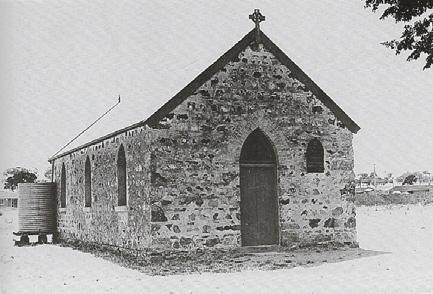


An elderly woman with hearing loss came to my clinic for a second opinion, after she had recently been to a hearing aid sales person. I found the cause of her hearing loss was simply the fact that she had build-up of wax in her ears, the salesperson had failed to inspect them. You might be surprised how often this happens!
Here are some things to do to avoid getting ripped off:
1. A visit to the GP may save you from being ‘sold’ something when your only problem is wax in your ears.
2. Look for someone who is independent and can offer you unbiased advice, not just give you a sales pitch.
3. There are a range of hearing aid prices. Finding the right hearing aid might save you money and it will also give you the best chance of success.
4. Hearing aids can be expensive.

Recently I was told by two different patients that they were quoted $16,000 for a pair of hearing aids. This seems a ridiculous amount of money to pay and is most likely not appropriate for the majority of people (or possibly anyone).

5. If you are a pensioner or partpensioner, or a DVA gold or white card holder, you should carefully consider if you want to use the free-to-client government hearing aids or if you’d like to top-up to a different hearing aid.
The free-to-client hearing aids are appropriate for many people, however if you have great difficulty hearing background noise (for example in restaurants) then you might trial the top-up hearing aids, but only if you can afford them. There are a range of top up options and prices, if you are disappointed after a trial, you should return them and trial the free-toclient hearing aids.
If you get the feeling the person you’re dealing with is just trying to sell you something, then take a step back and get a second opinion.
“In an unregulated market there is a lot of opportunity to take advantage of people. Yes you have read correctly, there is no licensing of people who sell hearing aids.”
– Dr Vass
– you need professional advice, not a sales pitch





THE National Capital Authority (NCA) has important national functions to do with stuff about administration, the national plan, the government of the day and the care of national assets.
There is also the expectation that the NCA has stewardship, heritage and accountability as top priorities. The NCA should be doing a great job looking after the national parts of the city with the focus on the cultural and heritage matters and on spending taxpayers’ money effectively.
There are now serious doubts about how the NCA carries out its functions and whether the organisation has a good grip on what good governance means. In mid-December, the NCA executive appeared before a national audit hearing and faced serious questions over how it operated.
This hearing was a follow up to a scathing report in June on its procurement functions when it was found to lack transparency, was not good at record keeping and had major faults in its procurement processes –how it spends taxpayers’ money.
The executive did not allay doubts when they admitted they were sloppy because they were too busy doing other stuff.

Many small arts, community and social organisations would have been
stunned by this. They spend days of their time justifying the details of expenditure of small grants. They would be wondering how such a government agency gets away with batting away the lack of accountability while they struggle to meet detailed requirements in order to line up for another tiny grant or two.
The NCA has a questionable reputation on several other issues well known to those who care about the stewardship of national sites. The list includes the decisions on the War Memorial extensions and the removal of significant trees, the inexplicable roll over by the NCA on the land swap to allow the ACT government to fill in part of the lake to enable future developments along West Basin, and
the agreement to allow planes to land on the lake for a few well-heeled passengers.

The granting of approvals for planes to land on the lake is stunningly silly given that there is the fully functional Canberra airport a few kilometres away. This will have consequences for the many who use the lake for recreational reasons and those who enjoy the peace and quiet of the lakeside amenities. Such an executive pet project makes sense only to those in comfortable executive positions. But there is more.
In front of the National Library stand two lines of Lombardy Poplars that were originally carefully selected and planted to be seen as formal guardians that lined up with

the architecture of the National Library’s building.
In recent years, mainly due to drought and associated lack of care, some of these trees have struggled. The decision was made by the NCA to replace them, not with like for like, but with another questionable species. Heritage organisations have been trying to convince the NCA executive to be good stewards and to honour the heritage nature of the original plantings.
The NCA has come up with all manner of reasons why they want to change the species including that the ACT planning chief, who has no authority over the NCA, has designated the Lombardy Poplars as an invasive species. Utter rubbish!
When managed well within sites such as within the national triangle, problems can be dealt with if the right levels of expertise were employed to maintain the plantings. The NCA, being a federal agency, can make its own decisions and can ignore the naive thinking of the ACT planning chief on this and other matters to do with heritage and the care of national assets.

The NCA executive needs to take a flight past these honourable poplar
trees and see what is happening in plain sight. Given the more recent rains, the trees have shown signs of recovery and are looking healthy. If a good arborist was employed to look after them, and a few replacements planted to fill the gaps, these heritage trees could have many more years of life as the National Library guardians. In the lead up to the last federal election, several candidates expressed concerns about the NCA with particular attention on governance issues. Add to that the heritage and stewardship concerns, there remains a strong case for a fully independent and urgent re-assessment of this national agency and its role in the future of this wonderful city. The NCA needs to give up the desire for flights to the coast and instead put resources and energies into doing the right thing by the National Library Lombardy Poplars.
Paul Costigan is a commentator on cultural and urban matters. There are more of his columns at citynews.com.au



There remains a strong case for a fully independent and urgent re-assessment of the National Capital Authority and its role in the future of this wonderful city.The doomed National Library Lombardy Poplars… the trees have shown signs of recovery and are looking healthy.
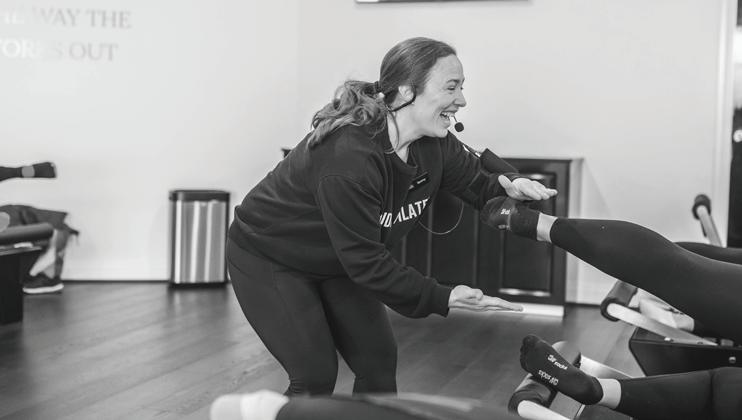
JACINDA Ardern’s announcement of her standing down as NZ’s PM was quite a surprise.

Kiwi journos tell us that she had lost some popularity at home; and while that might indeed be true, can you imagine a John Howard, Kevin Rudd, Tony Abbott, Scott Morrison or Malcolm Turnbull voluntarily departing the limelight and the levers of power, much less a Vladimir Putin or a pretend emperor Xi Jinping, just because they were on the voters’ nose?
Not, I suggest, in a million years.
Of course, they’re all blokes, but that’s only part of it. I’m happy to accept her version that after five and a half years at the top: “I know what this job takes. And I know that I no longer have enough in the tank to do it justice. It’s that simple.’
But it’s the manner of her leaving that’s truly impressive. It’s not just a gender thing, even though it’s curiously reminiscent of Ash Barty’s decision to leave tennis at the top of her game. Somehow, the Kiwis have created a system where parliamentary democracy has found a rare graciousness beyond the raw struggle for majority power.
In this case it extends beyond the polite transfer of leadership from Ardern to Chris Hipkins (I guess that’s Kiwi for Hopkins), the kid from Hutt, which we’re told is “a lower socio-
economic region in the capital’s north”. The new Deputy PM, Carmel Sepuloni, is a product of a Tongan, Samoan and Pakeha ancestry. “It’s very hard to fathom that a working-class girl from Waitara can become the deputy prime minister of NZ,” Sepuloni said. Maybe so. But compare that with Australia, where until the Albanese government came along Aboriginal women were virtually invisible in the councils of government. Perhaps it’s significant that it was NZ that gave women the right to vote in 1893 some nine years before Australia in 1902, although women in the colony of South Australia were the first in Australia to gain the right to vote in 1894.
In each case, the British landgrab was at least in part a strategic thrust against its traditional French
competitor. And in NZ’s case, this was a factor in the negotiation with the Maori in the Treaty of Waitangi. We’re still awaiting such a treaty with the Aboriginal people and Waitangi complicated the possible incorporation of the two colonies in the Australian Federation.
But we’ve always had a fascinating relationship with “Aotearoa” (which is itself an equally valid name for NZ these days). It sometimes feels as though they’re a kind of conscience against which to measure our national proclivities. Their relationships with America and China, for example,
seem somehow more principled – they decline to host US nuclear warships and market Chinese gooseberries as Kiwifruit – yet they’re so nice about it they escape unscathed from both.
At the same time, we love competing against them on the sporting arenas, be it netball where we usually win or rugby where we invariably lose.
And we love pinching their talents and claiming them for our own, like our first Labor PM Chris Watson, who migrated here at 19; entertainers Rebecca Gibney, Keith Urban, Russell Crowe and the mighty Phar Lap; to say nothing of the mouth-watering comestibles such as the pavlova, the lamington, the Anzac biscuit and, of course, the flat white cup of coffee.
But above all, it’s the quality that Jacinda Ardern wanted most to be remembered for that seems to elude our political practitioners: “As someone who always tried to be kind,” she said.
I guess that’s it in a nutshell… or a kiwifruit.
robert@ robertmacklin. com



ON-call firefighter (and “CityNews”) Paul Dorin has been awarded a National Emergency Medal for his work during the 2019/20 Black Summer bushfires.

The National Emergency Medal was established in 2011 in recognition of the contribution and commitment of those who have provided significant service in response to a declared nationallysignificant emergency.

THE Australian American Association is organising a Super Bowl event at King O’Malley’s Irish Pub, Civic, from 10am (kickoff at 10.30am) on February 13. Patrons will be able to watch the game live from Arizona.
Somehow, the Kiwis have created a system where parliamentary democracy has found a rare graciousness beyond the raw struggle for majority power.




It is a given that, for many First Nations people, January 26 is a day of profound trauma for a variety of reasons.
I propose that we instead have two days to celebrate Australia. January 26 could be known as First Nations Day, a day whereby all Australians celebrate and affirm First Nations people and culture exclusively and take the time to reflect on the terrible history that First Nations people have endured since the establishment of the British colony (and future nation of Australia) at Sydney Cove in 1788.
The alternative date I propose for the celebration of Australia Day is May 9.
This date is significant for three reasons:
May 9, 1901, was the date of the first sitting of the new Australian Parliament in Melbourne following federation.
May 9, 1927, was the date of the opening of the Provisional Parliament House in Canberra, signifying the official beginning of Canberra as the seat of the government of Australia.
May 9, 1988, was the date of the opening of the new Parliament House and permanent residence of the federal parliament of Australia.
May 9 is also significant because three generations of the Royal Family were
present at these respective events.
The late Queen Elizabeth II’s grandfather in 1901, her father in 1927, and Her Majesty in 1988.
I feel Australians could celebrate our nation and its people with a great sense of unity and dignity on these two dates and it could help towards ending the controversy and trauma in celebrating our great country on January 26.
Joel Pearce, Queanbeyan
HAVING looked up a reference entitled “Registrar General’s Maps and Plans”, “according to English Law, the land of an acquired colony belongs to the reigning monarch. This land is known as Crown land and this presumption was applied to NSW when Captain Arthur Phillip proclaimed the new colony on February 7, 1788. On this day all land was claimed as the possession of the reigning monarch King George III.”
So why are we continuing to have this argy-bargy about the date for the commemoration of Australia Day? If, by naming January 26 as Invasion Day will go towards solving the problem, let’s do it and transfer Australia Day to the more legally correct date of February 7.
This continual bickering over a date does not cover us in glory and is not what this country is all about. It is now more about acknowledging the traditional owners of
the land, honouring them and respecting their customs and sacred places, with the more correct date for Australia Day of February 7 being about honouring our pioneers and sharing and caring for the land which they colonised.
Let us do this as part of our acceptance of the Voice to Parliament.
Patricia Watson, Red HillIN Canberra’s parliamentary zone, Lombardy Poplars are planted as sentinels to key buildings and spaces.
They are dignified and tall trees with yellow autumn leaves that fall to reveal attractive white winter branches. They do not have showy blossoms or gaudy autumn colours. They do not drop big damaging branches or large cones. They are not a fire hazard and they do not propagate by seed dispersal.
But they do sucker and are a known hazard on rural watercourses. However, although sucker removal is undertaken successfully in many country towns, the ACT government has indicted the Lombardy Poplar as a “pest” in their Pest Plants and Animals Act 2005, an Act enforced by penalties that blanket-list numerous trees regardless of their management.
The NCA appears to be acquiescing to the ACT’s questionable “pest” legislation – that should not apply in the Commonwealth’s

heritage-listed parliamentary zone.
The stressed Lombardy Poplars at the National Library were initially proposed for replacement with stumpy oaks, later changed to hybrid Tulip Trees that are attractive but alien to the heritage landscape design. Remarkably, recent years of flooding rains have revived the library poplars, and a small amount of pruning will return them to the dignified trees of yesteryear.
Extensive poisoning will be needed to eradicate the poplar root mass along with the roots’ mycelium, possibly leading to poisonous runoff into stormwater and the lake.
The tree replacement proposal is a huge waste of dollars at a time when earth’s warming is desperate and when protection with proper management of all Canberra’s cultural trees is critically needed.
Juliet Ramsay, via email
WELL done, Frank Reade, of Macquarie (Letters, CN January 26), for voicing your disgust at the state of our once beautiful city.
The hypocrisy of this woeful Greens/ Labor government does not go unseen to all proud Canberrans.
For the last two decades, on all sides of the city, we have the exact same weed infestations, dead trees lining every road way, on main roads and in all our suburbs.
We now have St John’s Wort covering all of Canberra. It’s spread more and thicker than I have ever seen since 1963.
Clearly our “devoted environmentalists” have totally ignored the government legislation on noxious weed control in the ACT. Yet, across the border in NSW, land owners cop massive fines by all councils, if they dare neglect weed control.
The ACT government does not answer to anyone, not even the taxpayers that they are ripping off, blatantly wasting our taxes on “one huge white elephant” for the inner city and northside residents! Which, by the way, just happens to be Barr and Rattenbury’s electorate.

Follow the money Canberra voters, and ask yourself: do you want your whole city beautiful and maintained again, rather than a bleeding tram that only services a minority of inner-city elites and a minority of northside suburbs?
Not to mention the second, wasteful Stage 2 they are hell-bent on going ahead with.
Barr and his Greens/Labor have absolutely no shame. Instead of a legacy being a huge white elephant, it could have been funding and finding homes for all Canberra’s desperate homeless. What hypocrisy, shame and failure this Greens/Labor government has forced upon us.
Ros Thomas, GordonWE are all familiar with the “deep” concern of politicians about increasing homelessness and housing stress.


Yet they fail to adopt policies to increase the supply of social housing, despite policy reviews over decades finding it to be the most effective action. Instead, funding priority has been given to rent assistance, negative gearing and capital gains tax concessions.
These policy priorities have resulted in the share of social housing dwellings nationally falling from 9 per cent in 1990 to 4 per cent in 2022; increases in homelessness, housing stress from rapidly increasing rents and house prices, lengthening social housing waiting lists and a decline in the rate of home-ownership.
Other outcomes include the subsidising of well-off households into multiple home-ownership and the construction of environmentally problematic large homes. The Parliamentary Library estimates the national shortage of social housing will increase from 524,200 dwellings in 2022 to 670,600 dwellings by 2032.
The situation is no better in the ACT with the social housing share falling from 12 per cent of dwellings in 1990 to 6 per cent in 2022.
The Productivity Commission’s Report on Government Services data found the ACT had Australia’s highest rate of long-term homelessness, that between 2013 and 2022
the expenditure on social housing fell and the number of public housing dwellings fell from 10,956 to 10,744.
The construction of more social housing could be funded by increasing its budgetary priority, higher taxes, taxing high-value family homes, the removal of first home buyer assistance and reducing negative and capital gains tax concessions which largely benefit the wealthy.
However, political action is constrained by community opposition to increased taxes and attitudes shaped by windfall gains from increases in property prices. Until such views change, significant reduction in housing inequality is unlikely.
This places an onus on governments to increase the budgetary priority of social housing. Current actions include state governments providing $10 billion for the construction of an additional 15,500 social housing dwellings and the Federal government’s plan to build 30,000 new social and affordable housing properties over five years through the Housing Australia Future Fund.
Consideration could be given to targeting rent assistance to those on the lowest incomes, exploring rent-to-buy and build-to-rent schemes.
The ACT government could demonstrate its social justice credentials by giving social housing a higher priority including the diversion of funds from the unnecessary light rail extension to Woden.
Mike Quirk, Garran
RE the letter from Karina Morris about construction workers “perving” and commenting on scantily-dressed women (Letters, CN January 26).
I assume that the women Karina referred to in her letter were young (let’s face it, they would not have been considered “pervworthy” if over 25).

They might have dressed in a particular way hoping to attract the attention of certain young men they found appealing. They might have done it because they were trying to look like someone on social media. One thing I am sure of is that they did not do it to attract the attention of every hideous man they passed by.
There seems to be a general perception among men that women are not selective and will appreciate the attention of any man. Not so. It’s more likely the women will feel like vomiting.
Deb Edwards, WestonPERHAPS Katrina Morris (Letters, CN January 26) would prefer the culture of my childhood when a man would dip his lid or give up his seat to a woman as a mark of respect?
To even open a door for the modern woman could provoke a sarcastic response in the feminist vernacular.
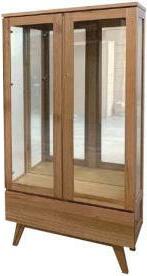
The late Prince Philip summarised the change in attitudes by quipping that when a man opens a car door for a woman it is either a new car or a new wife.
If young men receive their relevant education from pornography, TV programs such as “Married at First Sight” and the casual sex paradigm, while being a single, woke female is often preferred over being a mother of a family, is it surprising that disrespect is becoming blatant, even violent.
Yes Katrina, this is 2023.
John L Smith, FarrerTHE letter by Karina Morris (CN January 26) about the behaviour of male construction workers deserves support.
I am a 72-year-old male and I don’t remember ever having been taught that it is okay for men to publicly ridicule women for their choice of clothing.
It is interesting that building sites are the most common places where this happens. A group of blokes together trying to impress each other with their witty (or nasty) comments about some passing woman. They gain bravado by being in a group. They are not really concerned about what the woman is wearing, they are just trying to impress their mates. They are behaving like the cowards that they really are.
Karina mentioned that a male construction worker thought it was okay for men
to react adversely when a woman wasn’t attired according to their standards. Who do these blokes think they are? The Taliban?
A common sight around construction sites is the bloke with his shorts pushed low by his beer gut. From the rear, an unpleasant vertical smile displayed to the world. If a group of women were to start publicly humiliating one of these specimens, can you imagine the outrage!
Unfortunately, too many men from mine and the following generation, haven’t got the wit to realise that their attitudes are no longer wanted.
John Franze, GowrieKARINA Morris hit the male attitude problem on the head when she relates how the male worker would have told his female family members how to dress when they went out in public (Letters, CN January 26).
So some men still want to control women’s actions, right down to the way they look. Yet, they try to abrogate themselves and their mates from any responsibility to act like intelligent grownups.
Sounds like blatant sexism to me laced with an overdose of arrogant hypocrisy.
Eric Hunter, Cook“NO” is the answer that many indigenous Australians should give to the proposal for a Voice – a question likely to be put as a referendum issue later this year.
“Yes” is the answer that those non-indigenous who cling to their beliefs of ethnic, religious, cultural superiority should give to the proposal.
These answers reflect the contrasting self-interests of these two groups.
The issue for indigenous people is how to close the gap between “haves” and “have nots” (both among their membership and with the entire Australian community) while nurturing their cultural traditions.
The issue for the bigots is how a continuing indigenous disadvantage can justify their prejudices.
The genesis, consultation and final proposal for the proposed Voice is set out in the mid-2021 report, “Indigenous Voice Co-design Process” .


There are some 250 pages discussing both “Local and Regional voices” and the “National Voice”, the latter being the one for which explicit constitutional recognition is sought.
The report sets out its terms of reference, the membership backgrounds of the consultative committees, the efforts made to ensure wide consultation (including information in local languages and many, many local meetings), the disparate views expressed and the preferred models. It seems to tick all the boxes for a “community participation policy development model”.
It has been recently reported that perhaps two thirds of us will vote “yes”, a voting intention that reflects both an admirable state of mind and a failure to ask the question: “Is this THE answer?”
That’s pertinent because, despite all the commitment and hard work, the report fails. It fails to persuade us that this solution will improve the lot of indigenous Australians, that it will promote their interests, that it will lead to a better, lasting understanding of, and pride in, indigenous culture among us all.
This report will be an illuminat-

MAY I ask why are we being asked to take part in a referendum on The Voice to Parliament when the indigenous population is of the opinion that non-indigenous Australians are perceived to be all of the problem? It just doesn’t make sense.
Surely there would be a more equitable outcome if the referendum targets only indigenous Australians particularly given that more than one opinion for the way forward exists in their own community.
If we are to resolve this issue for all Australians then our indigenous
ing “real case example” for future students looking at “good public policy” of how a focus upon a “feels good” means entirely lost sight of the intended ends.
The proposed “representative” bodies are not a new concept. Advisory bodies of various kinds have been a part of earlier models intended to build stronger indigenous communities (for example, ATSIC from 1989 to 2004).
But this latest proposal merely “complements and amplifies existing structures” (of which there are many). Its purpose is to achieve a “greater say” in matters that affect indigenous lives, but the chosen means is to create an expensive, constitutionally embedded “talk fest” for a mere couple of dozen people who will have the status of being a part of that advice structure but no actual power and, most importantly, no responsibility for outcomes.
The report recognises the challenges of bringing people together, given divisions within indigenous communities that reflect the same strengths and frailties in any community. Tellingly, this report, by and supposedly for all indigenous Australians, wants the representatives to be “fit and proper”
persons. It excludes as representatives those convicted of an offence carrying a jail term of more than a year (pages 62, 139-141).
There is no need for a referendum, no need for yet another forum of talkers. It’s responsive actions to address known problems that are needed: actions that speak louder than words.
It’s telling because it shows the gap between “indigenous haves” (who wrote this report) and “indigenous have nots” (for whose benefit it is supposedly written).
If my grandparents died too young, if my parents are old before their time, if I never absorbed an education that respected my cultural background and equipped me to deal with today’s Australia, if I know that substance abuse is rife among too many people – young and old – around me, if relatives in juvie and adult prison is a given, if never having the readies to engage the best
Australians must have total ownership of the outcome without input from those who are not part of their culture.
Patricia Parker, DuffyIN respect of the Voice referendum, how can any fair-minded person believe it proper for the Labor government to permit tax deductions for donations to the “Yes” vote but deny it for donations for the “No” vote? Is this not blatant abuse of political power?
teachers, health and legal workers is both now and the future horizon, if that is the collective environment more than a half century after Wave Hill (when some 200 Gurindji took strike action), how does the proposed Voice help me and my similarly placed relatives in 2023? It doesn’t and it won’t.
That bleak picture must be seen alongside the dazzling successes of indigenous Australians in music, dance, the arts, and many sports. There are also those who have benefitted from education that has led them to successful and uplifting field and technical careers, to academic and professional lives. They don’t warrant a special Voice.
The report authors acknowledge that “people need to be involved in decisions that affect them”, that any kind of “top down” won’t work.
Sadly, this is a report that replaces a discredited form of “top down” with a new form that will be harder to change because it will be constitutionally enshrined.
Even rusted-on Labor and Greens voters should acknowledge that, or otherwise be shameless. What else would such an authoritarian government be prepared to do to abuse the rights of citizens that oppose them?
Max Flint, ErindaleAll opinions welcome “CityNews” welcomes all opinions on the Voice. Respectful submissions of up to 750 words to editor@citynews.com.au, please.
Today, when current “local views” can be known quickly and inexpensively with widely used social-media tools, why set up another bureaucratic logjam?
Let the existing indigenous organisations use their links with their communities to prioritise issues and to tell government the level of service delivery (expertise and time required) that will work.

In short, there is no need for a referendum, no need for yet another forum of talkers. It’s responsive actions to address known problems that are needed: actions that speak louder than words.
Hugh Selby is the “CityNews” legal affairs commentator. His free podcasts on “Witness Essentials” and “Advocacy in court: preparation and performance” can be heard on the best known podcast sites.

BEING a parent is often referred to as being one of the hardest jobs in the world. Children bring joy and excite ment, but they also come with a big learning curve for parents.

To offer some practical insights, we’ve spoken to people with expertise in helping you make the most of these busy years.
How you breathe is critical to your overall health.

At Happy Faces we aim to help everyone breathe well. We do this by assessing the airways, correcting habits and dysfunctions and working with other health professionals where needed.


At Happy Faces we can assess a child’s growth and development to ensure the muscles of the face and jaw are working properly to facilitate ideal growth.
Too many people don’t get enough good quality sleep. Poor sleep effects our health, our quality of life and can even effect the whole family. Orofacial Myofunctional Therapy is a proven way to improve sleep quality through reduce snoring and sleep apnea.

Happy Faces Orofacial Myology Fraser ACT

Call Jaimee on 0472 775 058

info@happyfacesom.com.au
Did you know that how you breath, sleep, chew and swallow effects how the face and jaws grow?
KIDSTART Southside Education and Activity Centre understands that the first five years of a child’s life are crucial for development, says owner Kristen O’Connor.

“Kidstart offers classes for children from five months to five years of age to develop them socially, physically, emotionally and intellectually,” she says.
Operating since 1996 and located in Wanniassa, Kristen says Kidstart offers three distinct and age-appropriate programs to ignite a love of learning.
The first program is for children under the age of three, to attend with an adult, and introduces them to music, stories and stimulating equipment.
The second program is a “Pre-Preschool” program for three and four-year-olds to attend by
ARTKIDS CEO and mother of two, Robyn Thurecht says she provides an alternative to the standard after-school care program with structured art classes for children that focus on developing skills across a range of mediums.


“We work onsite or in nearby community halls so parents don’t have to leave work to take their kids to another location,” she says. The program is “for families who value art and drawing but don’t necessarily have the time or skills to share with their children at home”.
themselves before starting preschool.
“It has been amazing to see 21 years’ worth of kids and their families growing, loving, enjoying and benefit ting from the program,” says Kristen.
The third program is Preschool PLUS. It’s designed for children to be involved alongside Preschool. The program is centred on phonics based literacy.
“We are passionate about developing a love of learning in each and every child.
“By allowing them to thrive in an educational setting and experience the joy in exploring and achieving, we hope learning will be a lifelong passion for all our Kidstart kids.”
Kidstart Southside Education and Activity Centre, 65 Sternberg Crescent, Wanniassa. For enrolment enquiries visit kidstart.com.au
While pursuing visual arts at university as a mature-age student, Robyn decided she would teach the art class she wanted as a child.
“One of my favourite childhood photos – in that lovely sepia-toned ‘70s colour – is me aged four or five, in my painting smock made by my crafty mother, standing in front of a painting easel, brush in hand.
“For every child artist we teach each week, there is at least one frustrated parent who, like me, would have loved to attend a class like this when they were
NORTHSIDE Community Service has a strong focus on community engagement, hosting a diverse range of programs and events, says community development officer Lisa Navarro-Bustos.
The Service has recently been utilising the new community hub space in Margaret Hendry School, Taylor, for its early-childhood nature program.

“This space is great for families that are new to Taylor and looking for a community connection,” Lisa says.
In conjunction with Belconnen Arts Centre, the Northside Community Service will host a sports and wellbeing summer expo, with a variety of local sports and recreational groups, at the Amaroo

Playing Fields from 3.30pm on February 10.
“With this event, we want to boost children’s participation in sports and recreation,” says Lisa.
“This is a come-and-try event where children will be able to get a taster for many different sports.


“Families are also able to register their child into their favourite sport at the event.
“Whether they’re into team sports, fitness classes, meditation or the great outdoors, there will be something on offer to deepen a connection to the region.”
Northside Community Service, 2 Rosevear Place, Dickson. Call 6171 8000, or visit northside.asn.au

Winnunga Nimmityjah Aboriginal Health and Community Services (Winnunga) is a multiaccredited Aboriginal community controlled and managed primary health care service located in Narrabundah ACT.

We provide integrated client centric wrap around services, which focuses on the clinical, cultural and spiritual needs of Aboriginal clients, families and the community, including programs for Mums and Bubs.

The Midwifery Program aims to remove barriers that prevent women from accessing maternity care in mainstream services.
The Program maintains strong working relationships with each hospital which allows for seamless transitions of care.
Following the birth of baby, the Program provides up to six weeks of postnatal care in the client’s home assisting mothers with feeding, weight monitoring, emotional wellbeing assessments and mother-crafting/health education.
The Midwifery Program has developed strong links with the Winnunga Australian Nurse Family Partnership Program. Both programs work together to provide holistic care for first time Aboriginal and/or Torres Strait Islander mothers, or mothers having an Aboriginal or Torres Strait Islander baby, in the Canberra region.
The programs complement each other and ensure mothers feel prepared and supported through their pregnancy and early parenting stages, up until the child is two years of age.
The ANFPP provides information and education to mothers using a strengths-based approach, which builds individual capacity to identify solutions to problems.

Mothers feel empowered as they learn how to work with their strengths, realise the power of their own actions and gain a greater sense of control over their lives.
Winnunga AHCS is a national leader in accreditation, was one of the first Aboriginal community controlled health services to achieve dual accreditation under RACGP and QIC standards. Winnunga AHCS has been at the forefront of setting a national agenda for quality improvement in Aboriginal community controlled health and continues to advocate locally and nationally for best practice standards in operational and governance areas of Aboriginal health services.

hours |
Ph: 6284 6222 | 63 Boolimba Cres, Narrabundah
www.winnunga.org.au
• Open your baby’s world to the delights of massage, movement, visual stimulation, music, instruments, sign language, puppet shows and so much more!



• Every week is different!
• Specifically designed for babies from birth to 13 months
• Baby Sensory parties available, just ask!

BABY Sensory is a multi-award-winning development program specifically designed for babies from birth to 13 months.
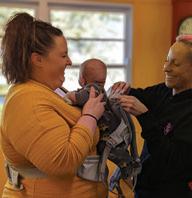
Sensory to Canberra when she learnt about the program from her Sydney-based sister who attended classes with her children. wanted to do something similar but realised it wasn’t available locally.

BOOK AT babysensory.com.au/canberra-act
Or CALL MIA on 0423 713 222 canberra-act@babysensory.com



development experts in the UK,” says Mia. incredible variety of sounds, smells, sights, textures, music, dance, singing and more.
Kangatraining is a postnatal safe, full body low impact workout during which both cardiovascular endurance and muscular strength are enhanced.
All our classes are designed by woman’s health physiotherapists, midwives and babywearing consultants to look after your baby and your postnatal body, even those mums with abdominal separation.

Special consideration is taken to protect the pelvic floor in all classes.
• No need for a babysitter
• Total body workout
• Promotes mother and baby bonding
• Promotes healthy mind and body
• Promotes safe and healthy babywearing

• Positive outcomes for postnatal depression
• Social, meeting other like-minded mothers
• Relaxed and fun environment
• Creates a support structure
www.kangatraining.com.au
BOOKNOW!
Canberra Airport District, Queanbeyan, Kingston and Narrabundah
Scan QR code for class information

You’ll be so glad you came!
Contact Details
Kirstie Watson 0428 073 607
kirstie.watson@kangatraining.com.au @kangatrainingcanberraairportdistrict

 By Helen MUSA
By Helen MUSA
ONE of the brightest new-wave stars in the international film and video-game composing scene is coming to Australia soon – just to Canberra.
Hayat Selim has been engaged by local creative producer Dianna Nixon, of Music Theatre Projects, to help create the score for an original stage musical about a legendary Egyptian screen idol, but she’ll make a couple of appearances, too.
A singer known for her vocals on “Age of Empires IV” and the film, “The Forgiven”, she’ll perform a concert at The Street Theatre themed around her own song, “Mirage”, which was broadcast on BBC Radio 3 for the 50th anniversary of Apollo 11.

There’ll also be a workshop at the ANU on February 15 contrasting the techniques in composing for films versus games, something bound to excite Prof Ken Lampl, himself a leading film and games composer.
I caught up with Selim by Zoom at her home in London, where she moved to do a masters in screen composition at the Royal College of Music.
Relaxed, humorous and smart, Selim



confirms that she was a most unlikely candidate to join the music world.
With a B.Sc. in digital media engineering and technology from the German University in Cairo, she was supposed to
be an engineer, but all the while she was privately studying composition and singing, with the dream of getting into her favoured thing, musicals.
Not Egyptian musicals; she’s talking
shows such as “Wicked” – Broadway and West End shows – and she hopes the new musical, “Camelia”, might be a success in the same vein.
Nixon has been working with archivistEgyptophile, Ian Batterham, on a script about ‘40s and ‘50s Egyptian film star, Camelia, a one-time girlfriend of King Farouk, who died young in a suspicious air crash and is the perfect subject for a musical.
Other collaborators are Egypt-born director Mohammed Hashem and lyricist-writer Vidya Makan, who plays Catherine Parr in “Six” the musical.
Camelia was part of Egypt’s massive film industry and is still famous to people of Selim’s grandmother’s generation and some of the old songs rubbed off on to the granddaughter.
Her studies eventually led her to Cairo’s GUC Music Ensemble and the Fabrica Company for Musical Theater, but while mastering harmony, counterpoint and music, she found the classes jumped into writing for gaming music straightaway.
“Independent games development is huge in Egypt,” she says. “It’s become a cliché that the games-development industry everywhere in the world is dominated by Egyptians.”
She worked on smaller games first, quickly making herself one of the go-to composers in Egypt, profiled in “Women in Gaming:100 Professionals of Play”.
In one project, the game was based on a story from Ireland, “a universe of amazing music… I’m obsessed with that music”, she says.
Sometimes, but not often, the music demanded could be “oriental”, but she says: “So far in my career, nothing much has been particularly Middle Eastern, but if I were to score a game for say, ‘Prince of Persia’, it would have to be oriental… I would call my style a bit filmic, Hollywood-ish.”
The film and games music is what she does “to put bread on the table, but my real passion lies in singing”.
Her Canberra concert is therefore about her as a singer, with Nixon accompanying and performing occasional backing tracks for atmosphere.


Although she won’t perform games music as such, she will do one song she wrote for a game.
The opening number will be in the ancient Egyptian language, close to Coptic. There’ll be Irish music, two Arabic songs, including one in Lebanese dialect, and a song used by Cirque Du Soleil.
Selim says she’s looking forward to meeting her collaborators on “Camelia”, going through the story and researching popular music in Egypt while also considering how, musically, “to be present in the 21st-century”.
Hayat Selim, The Street Theatre, February 16.
SOON, gone will be the days of sharing a Netflix account.
In a controversial move the streaming giant has planned to axe password sharing within the next few months.
A blog post from one of Netflix’s corporate boffins said only one household will be allowed to use a single Netflix account. If users want to add another household, they’ll have to fork out an additional monthly fee.
That means time’s almost up for friend groups who all share the account of that one good samaritan who gives out their password, or anyone still making use of an ex’s profile unnoticed. Better make the most of it while there’s still time.
The streaming giant has clued on to the fact that this move isn’t going to go down well, saying there’ll be a bit of “cancel reaction” to the decision.


No kidding. Many are already fed up with Netflix after multiple price hikes and the platform announcing its plan to introduce ads. The loss of password sharing will be the final straw on the camel’s back for many a streamer.
“Netflix literally sabotaging themselves... it’s incredible”, said one cranky Twitter user to the news.
“I’ll just go back to YouTube then”, said another.
“They lame for this”, eloquently declared a third.
It’s a ballsy move from the platform given a tumultuous 2022.
Last year Netflix recorded its first loss of
platform, plunging the company’s share price.

Like their price increases and plan to introduce ads, the move to get rid of password sharing seems to be a desperate attempt to secure their bottom line. The Netflix higher-ups estimate locking accounts down to one household will result in more than 700 million bucks in revenue in the long term.
Adding to the platform’s woes is the controversy of its serial cancelling of shows.
many more all bit the dust in 2022 to many fans’ ire.
The most recent series to fall under the axe is “1899”, the German sci-fi thriller from the creators of the cult hit “Dark”.
“We would have loved to finish this incredible journey with a second and third season as we did with ‘Dark’,” showrunners Baran bo Odar and Jantje Friese sadly expressed on Instagram.
“But sometimes things don’t turn out the way you planned.”
it into the top 10 most watched series on its debut. It wasn’t even given a chance to grow a fanbase and, after what bo Odar and Friese managed to pull off with “Dark”, they deserved better.
In its early days Netflix offered an exciting alternative to free-to-air TV in its ability to
cater to almost any audience.
Strange and obscure shows such as “1899”, that would never see the light of day on traditional television, were embraced by the platform. It attracted millions of people who thought that no matter what they wanted to watch, they could find it on Netflix.

Now it seems the company is more and more abandoning that approach to storytelling.
How the platform will police its passwordsharing crackdown isn’t quite known yet. Households will still be able to use one Netflix account across multiple devices and Netflix has promised that users will still be able to stream while travelling.
Whatever the plan is, the company is hoping to enforce it by March. How the subscriber base and share price react will be intriguing.
If there’s any silver lining to all this, I guess other people on the same account will no longer be able to see all the embarrassing stuff we’re watching.
Yes, I’ve seen “Too Hot To Handle” in the “continue watching” section of my account. You know who you are.
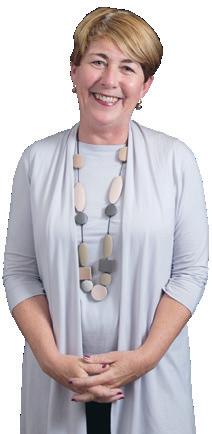
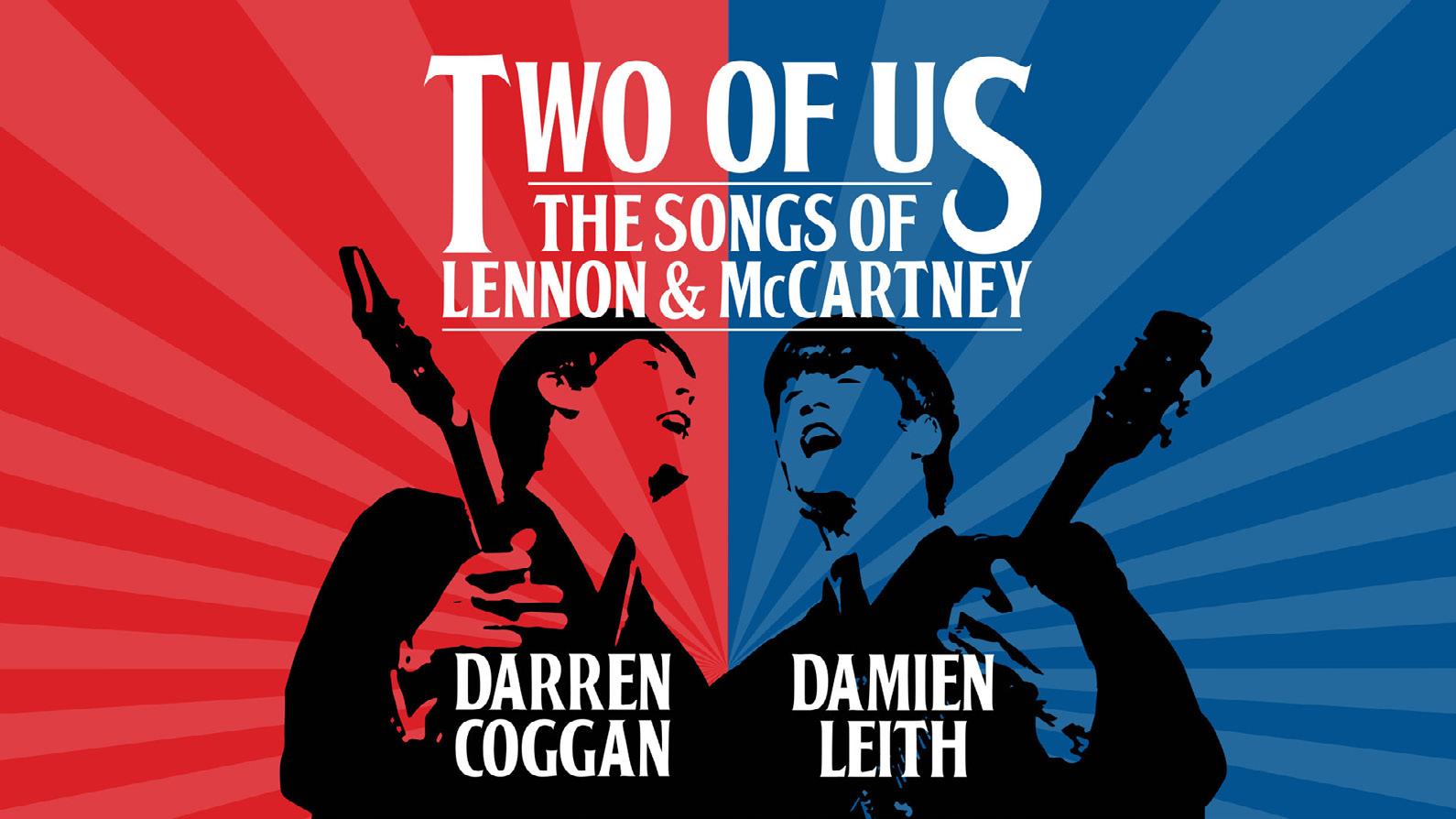 By Helen Musa
By Helen Musa
INARI, in exciting Tiger Lane, is sensational. It’s one of the 12 food and bar outlets – including hatted restaurants, hawker-style eateries, and communal bar areas – that will form Canberra’s newest dining precinct.
When all open, these dining spaces promise to take Canberrans on culinary journeys across Japan, South Korea, southern China, northern China and south-east Asia.
Inari is named after the Japanese Rice God. This is the upmarket, signature restaurant of Tiger Lane’s executive chef Shaun Presland, widely respected for his abilities with, and influence on, Japanese cuisine.
One of Shaun’s claims to fame is his masterful flair in melding traditional Japanese flavours in contemporary dishes featuring high-quality, fresh Australian produce. Also on the team is head chef Maria Sheslow, who hails from Sydney’s Bay Nine Omakase.
The decor at Inari is intriguing, mysterious and unique. Each dish is artfully plated and well-considered. We indulged in many and loved every bite.
With the crisp, fresh 2021 Golden Child Fume Blanc (Adelaide Hills, $62/bottle) we tantalised our tastebuds with steamed soybeans ($7). The warm edamame was tossed with lovely, flavoured salts.
The sashimi tacos were perky and fun (two pieces for $12), and the carefully diced tuna and salmon sashimi testament to the high-quality
and the chilled tomato and jalapeno salsa danced. Meticulously presented ceviche arrived next. The snapper and kingfish were dressed in a wonderful combination of citrus and chilli.
Thin slices of jalapeno were placed on top and a mound of fresh herb was in the centre ($25). A feast for the eyes and a memorable dish.
The lightly fried salt and pepper sansho squid ($18) sang with flavours – chilli, garlic, spring onion and lemon. The squid was super tender.
Absolutely divine were the coveted pan-seared Hokkaido scallops with miso cream ($28). These Japanese scallops are up there with the best. Perfect round parcels with amazing flavour and gorgeous texture. Six formed a circle

in the dish, sitting proudly in the magical cream reduction. Seasonal veggies topped with fresh coriander were placed in the centre.
Inari’s enticing menu also features Maki rolls. A range of these traditional sushi rolls is on offer, but Inari takes each to another level.

We’ll be back for the Omakase menu (minimum two people, $85 per person). Omakase roughly means “trust the chef” to select a variety of quality dishes that work perfectly together. We’ll also be soon heading to Taki, also open at Tiger Lane. Taki specialises in the fascinating world of Japanese hot pots (shabu-shabu) and Japanese barbecue (yakiniku).
MENSCH, Monique! from Germany play an amalgam of Berlin indie folk with funk, jazz and blues alongside German-Australian duo The Beez playing a yodelling, thigh-slapping mix of Germafied Oz Rock classics. The Artists Shed, Fyshwick, February 18.

SPECTACULAR Russian violinist Ilya Gringolts returns to the Australian Chamber Orchestra to direct a program featuring Bruch’s “Violin Concerto” and the world premiere of Harry Sdraulig’s “Slanted”, Llewellyn Hall, February 15.
CHAMBER Philharmonia Cologne will perform Vivaldi, Mozart and Paganini in St Christopher’s Cathedral, Forrest, February 14.
THE Australian Haydn Ensemble performs string quartets by Haydn, Bach and Mendelssohn, performed on instruments of the period. Wesley Music Centre, Forrest, February 16.
ORIGINATING from a collaboration at the 2022 National Folk Festival, the Phoenix Collective Quartet teams up
with Tibetan singer and multiinstrumentalist Tenzin Choegyal for a program that takes the audience on a journey through Tibet. Wesley Uniting Church, Forrest, 2pm, February 18.
ACT Hub, Kingston, is branching out with a series of forums. First up is a one-hour theatre critics’ forum where panellists articulate their philosophy of theatre criticism, followed by a Q&A, 6.30 pm, February 15.

WITH no rehearsals, no director, a different actor each night, and a script waiting in a sealed envelope on stage, “White Rabbit Red Rabbit” by Iranian writer Nassim Soleimanpour will be staged at The Mill Theatre, Fyshwick, on February 15, 16, 18, 23 and 24.

“CityNews” food reviews are up and running for 2023 and first up is a mega winner, writes WENDY JOHNSON.Sashimi tacos… carefully diced tuna and salmon sashimi. Photos: Wendy Johnson Pan-seared Hokkaido scallops with miso cream… veggies topped with fresh coriander. The Beez… The Artists Shed, February 14.
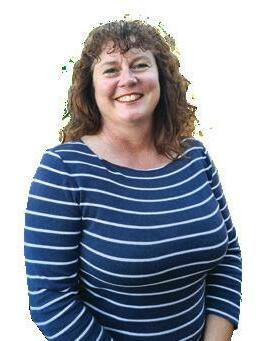
begin ripening in the next month or so.
Pears grow well in our environment and like wet feet more than other fruit trees. Most fruiting pears flower early in spring, but can be prone to frost damage to the flowers. Unfortunately, if this happens there is no fruit for the season.
There are more than 3000 cultivars of pears to choose from, so it’s important to grow what you like to eat. If looking at crunchy pears to eat straight off the tree or pears for stewing, preserving or drying, there’s an abundance of choice.
It’s important to ensure that the chosen variety has a pollinating partner or is a self-fertile tree. Some varieties can be large trees, but there are grafted dwarf varieties if space is limited in the orchard. I have grown a Trixz0ie pear tree for about 15 years. It’s a self-fertile dwarf tree, about 1.5 metres tall and 50 centimetres wide. It’s had little or no pruning and still fruits quite well, certainly more than enough for our

I get problems with pear and cherry slugs on the leaves, but only

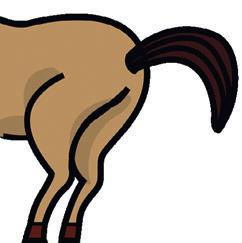
high level.
Asian and European pears ripen differently. Asian pears don’t ripen further once picked, but the Europeans ripen from the inside out and need to be picked about 10 days before becoming fully ripe.

If the pips inside the pears are black, it is a good sign that the pears are ripe and ready for picking. When picking pears ensure the stem is intact as this helps with the long-term storage of the pears.
Companion plants to grow around a pear tree are members of the Allium family, lavenders and most herbs, but pear trees are shallow rooted so minimal digging around the root zone will ensure that suckering or damage to the roots is kept to a minimum.

All pome fruits such as apples and pears get a good hard prune in the winter, but a summer prune can be done to keep their growth in check. Prune any current branch growth that is longer than 50 centimetres and cut back to a third of the branch.
Summer pruning inhibits vigorous current branch growth, encourages fruiting spurs, and maintains a more manageable tree shape if netting is required.
WINTER vegetables such as broccoli, brussels sprouts and cabbages can be planted in the next month or so while the soil is still warm to get some good growth before the winter weather sets in.
Now is the last chance to sow seed for planting winter crops. Seed can be sown into punnets with seed-raising mix and kept moist in bright light but not full sun.


When there are six sets of leaves, plant out and protect seedlings from snails and slugs with diatomaceous earth. Sowing broccoli seeds that are heirloom varieties ensures the seed can be resown each year.
More modern varieties such as broccolini, which is a cross between true broccoli and Chinese broccoli, is an F1 hybrid meaning the seed is sterile and will not regrow the following season. My favourite broccoli to grow is Di Cicco Early, which has bluish-green heads and lots of side shoots. Harvest time is from 65 to 85 days.
A FAVOURITE flower this summer is the plume poppy (Macleaya cordata). It needs room to grow and adds size and architectural interest in the garden.

Although it can be weedy in the tropics, I manage to keep the rhizomes under control and very rarely water it. The striking, tall flowers can grow at least two metres tall and are a terrific plant for the vase.
jackwar@home.netspeed.com.au




13-19 February, 2023
ARIES (Mar 21 – Apr 20)
This week romance is in the air, but the energy is behind the scenes suggesting a private, magical Valentine’s Day. (“Romance is the glamour which turns the dust of everyday life into a golden haze” – Carolyn Gold Heilbrun.) Single Rams – subtle signs and unexpected synchronicities could lead you to your true love, so keep your intuition well-tuned. When it comes to work, a long-term goal or a group project requires plenty of hard graft to get it off the ground.
TAURUS (Apr 21 – May 21)
Have you got a pile of projects that you’ve started but is unfinished? This week the Sun and Saturn boost motivation and concentration, so you can bring a project to a conclusion. Don’t waste the opportunity! With Venus and Neptune hooking up in your hopes-and-wishes zone, you’re set for an amorous Valentine’s Day. Romantic music, stylish surroundings and gourmet food are calling. Singles – sparks could fly with a sexy Scorpion or a passionate Piscean.
GEMINI (May 22 – June 21)
Gregarious Geminis love to chat, so this Valentine’s Day is the perfect time to tell loved ones how much you really care. Inspiration for the week is from birthday great, avant-garde artist Yoko Ono (born on February 18, 1933): “The regret of my life is that I have not said ‘I love you’ often enough.” Saturday’s Mercury/Jupiter connection is fabulous for communication, education, travel, commerce, business, philosophical discussions and future planning.
CANCER (June 22 – July 23)
Coupled Crabs – find a dream you and your partner can share together. Then put time, effort and hard work into making that dream come true. (“Love does not consist of gazing at each other, but of looking outward together in the same direction” – Antoine St Exupery.) Singles – with romance planet Venus in your travel zone, love is likely with someone from another country or culture. Alternatively, you could meet them while one of you is on holiday.
LEO (July 24 – Aug 23)
When it comes to romance, marriage and close friendships, Saturn is constantly reminding you about your current duties and responsibilities. But, this week, make sure you have plenty of fun. Your quote for Valentine’s Day is from writer George Sand: “There is only one happiness in life, to love and be loved.” Saturday favours partnerships, communication, education, travel and international connections, as you initiate projects with passion and enthusiasm.
VIRGO (Aug 24 – Sept 23)
Whether you’re attached, searching for your soulmate, or happily single, Valentine’s Day is an appropriate time to reflect on the fact that love really does make the world go around. And love is definitely the glue that binds us all together. Saturday’s Mercury/Jupiter link highlights your natural ability to think of a fabulous idea, do the research that’s required, and then act on it. When you walk your talk (with Virgo versatility) you’re unstoppable!
LIBRA (Sept 24 – Oct 23)
At the moment, with taskmaster Saturn moving slowly through your romance zone, love is a very serious business. So your quote for Valentine’s Day is from writer William Barclay: “Love always involves responsibility, and love always involves sacrifice.” Single Librans – it’s time to give flirtatious, superficial suitors the flick. Instead, look for a lover who has real character, depth and substance. A philosopher (with a romantic soul) who can last the distance.
SCORPIO (Oct 24 – Nov 22)
When it comes to finding (and maintaining) love, resist the urge to be overly controlling. Attached Scorpio – avoid the temptation to be bossy at home. Give your spouse more space. Singles – stop looking for love in all the obvious places. Write a wish-list of the important qualities you desire in a dream partner. Then sit back and wait for the magic to happen. As actress Loretta Young observed: “Love isn’t something you find. Love is something that finds you.”

SAGITTARIUS (Nov 23 – Dec 21)
With dynamic Mars travelling through your partnership zone, prepare for a bold and beautiful Valentine’s Day. Coupled Sagittarians – why not initiate a special romantic rendezvous with your partner? Singles – in order to find true love, you need to be brave and step out of your comfort zone. So, your motto is from Chinese philosopher Lao Tzu: “Being deeply loved by someone gives you strength, while loving someone deeply gives you courage.”
CAPRICORN (Dec 22 – Jan 20)
Focus your attention on your lover, as you give them the right royal romantic treatment this Valentine’s Day. Singles … love and work are linked. However, when it comes to money, are you feeling less than abundant? The Sun/Saturn conjunction encourages you to work towards a financial goal with passion and persistence. Be inspired by birthday great Michael Jordan: “Some people want it to happen, some wish it would happen, others make it happen.”
AQUARIUS (Jan 21 – Feb 19)
Don’t take your partner – or potential partner – for granted! If you do, then your neglected lover may go looking for attention elsewhere. (“Love doesn’t just sit there, like a stone. It has to be made like bread, remade all the time, made new.” – Ursula Le Guin.) So, plan something uniquely special this Valentine’s Day. Single Aquarius – it doesn’t matter what a potential partner looks like, or how much money they make, you need a romantic mate who is also a friend.
PISCES (Feb 20 – Mar 20)
Attached Fish – you’re feeling extra romantic as you lavish attention (and money) on your partner, wear your heart on your sleeve or play out a secret fantasy with your lover. Single Pisces – don’t base your self-esteem on whether you have a partner. You possess a multitude of talents, and a compassionate nature. Finding your soulmate is just the extra icing on an already spectacular cake! As the Sun shifts into Pisces (on the weekend) it’s your time to shine.
Copyright Joanne Madeline Moore 2023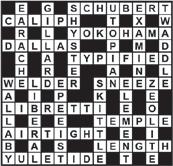


1 Name an alternative term for a stockman (US). (6)

8 Which Queen of Castile was the patron of Christopher Columbus? (8)
9 To develop gradually, is to do what? (6)
10 What might we call an “all day sucker”? (8)
11 Which term describes an exposure to danger or harm? (6)
12 What, colloquially, is political rhetoric? (4)
13 What, in two-up, is the opposite to tails? (5)
16 Name a type of heron. (5)
19 Name the appropriate sire of the dual Melbourne Cup winner, Archer, William ... (4)
21 What was the reputed exclamation of Archimedes? (6)
22 Which secret expression is used to obtain access to a restricted area? (8)

23 Name an extremely small weight. (6)
24 Name a powerful bleaching agent. (8)
25 What is a crisp, pungent, edible root of a particular plant? (6)
Solution next edition Down
2 To prevent difficulties by effective measures, is to do what? (7)
3 What is a strong post on a traffic island? (7)
4 Name dividends returned on investments. (6)
5 What is the mutton-fish known as? (7)

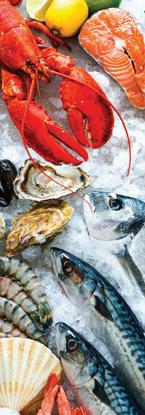
6 Which sailing vessel is built and rigged for speed? (7)
7 What serves as a bulwark or defence? (7)
13 To domineer over one’s husband is to do what? (7)

14 What might we call one of the 12 disciples? (7)
15 Name a renowned US film actor, Jimmy ... (7)
17 Frances Gumm was better known as Judy ...? (7)
18 What are Inuits called? (7)
20 What is an account book of final entry? (6)

Sciatica is caused by nerve pain that originates from the lower back and can cause pain from the point, right down through your bottom and down one leg to your calf.
Not the entire area may be causing you pain at any one time, but what the pain will certainly do is cause you frequent extreme discomfort that is often not relieved by pain medication. Exercise is a key to dealing with sciatica. People who have lived with sciatica for some time will generally have some weakness of the
muscles, tendons and ligaments surrounding the joints and bones that support the sciatic nerve. This is largely due to not having used their body to the fullest extent due to the sciatic pain.
Sciatic pain will generally respond well to rebuilding the support structures surrounding the sciatic nerve. For some people surgery may be the only solution, but in most cases, even if surgery is required, building up the support structures either prior to or following surgery will still be necessary.

Arthritis ACT has a team of exercise physiologists that can improve your quality of life in relation to your sciatica. Both hydrotherapy and land based exercise techniques are useful, and for those who do not like water exercise, land based exercise is just as effective.


